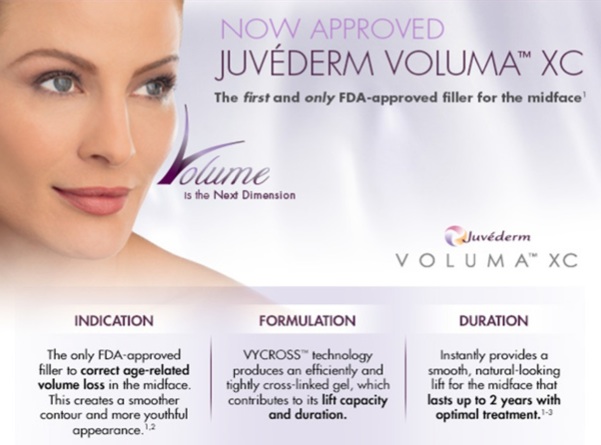Services
Aesthetic


Dr. Clinton wanted to spotlight the newest filler: JUVÉDERM VOLUMA™ XC and answer your frequently asked questions.

Juvederm Voluma XC How do cheek fillers work? They work by having less compressibility, while also adding a lift in the skin. Most patients either want a more defined cheek bone or want a lift in the lower face. Cheek fillers can treat these concerns. Can cheek fillers take the place of surgical procedures like a face lift or cheek implant? And if so, in what ways are fillers better? They can take the place or prevent the need for surgical procedures. It is better to think of cheek fillers as an alternative. The volume of change can be adjusted by the individual amount injected – so the single largest advantage is the ability to customize the treatment areas for each patient. How long will the effect of cheek fillers last? Voluma specifically is seeing 65% of patients report they can still see a change at 2 years. Does this procedure work on everyone? Or are there exceptions? This procedure works on individuals looking for less flattening of the face which happens with age and also patients needing lifting. The placement of the filler can vary with age and skin thickness. There are patients whom this filler is not indicated to use on and that would require a discussion with your physician. How long is the procedure, and what is the recovery time? The procedure can take up to 30 minutes. There is very little to no down-time with the procedure – although bruising may occur. It may take several days to weeks for all side effects to decrease such as: ability to feel the filler under the skin, bruising and swelling. Does this procedure require more than one session? And how much does each procedure usually cost? Different fillers have different answers to this question. Some fillers require several treatments to achieve optimal results, which will then need maintained. Others require a period of time for collagen to produce – such as Radiesse and Voluma. Prices range from $2,000 to $5,000 depending on how much cheek filler is needed. How different will the patient look after the procedure? The patient will look like their face has a more youthful appearance – with a softer curve to the face and not as much flattening. Occasionally, some of the filler can be pushed under the eye area and the dark circles can be reduced in this area as well. Do you have some advice on how not to look too “done” from fillers? Go slow – more can be added at a later date. If you are in your 30s most optimal results can occur from the first treatment, and then continuing to improve upon these prior results is recommended. If you have aged beyond 40 with no prior treatments, it’s important not to expect every line to be gone with the first treatment. When treating lines around the mouth it’s important to have patience if there are more than a few. And no one wants the look of duck lips. I suggest using a smaller amount of filler in these lines but a bit more frequently. Studies cited that common side effects of this procedure include swelling, bruising, redness, pain and itching that can last up to 4 weeks—are there ways to lessen or eliminate these outcomes? Yes. Avoid omega supplements and antioxidants before treatment, as well as aspirin, non-steroidal anti-inflammatories and alcohol up to five days prior to procedure. Taking a bromaine supplement, drinking pineapple juice the evening before, and using Arnica cream before the procedure can help. Icing and pressure at time of the procedure are also helpful. Finally, rate of injection is important and a slow, steady injection is preferred to lessen bruising. Who can administer this procedure? Physicians usually administer the procedure, but law varies state by state and RNs & PAs are able to inject in some states. Other licensed professionals such as dentists have also received state approval to inject, but this again varies by state. What credentials should we look for? Please have someone who does this as their primary practice and not an adjunct to their practice. Go to someone who does this frequently and has patients that will give you feedback on their experience. Does the staff look like you would like to look? Do the patients have the look that you want?